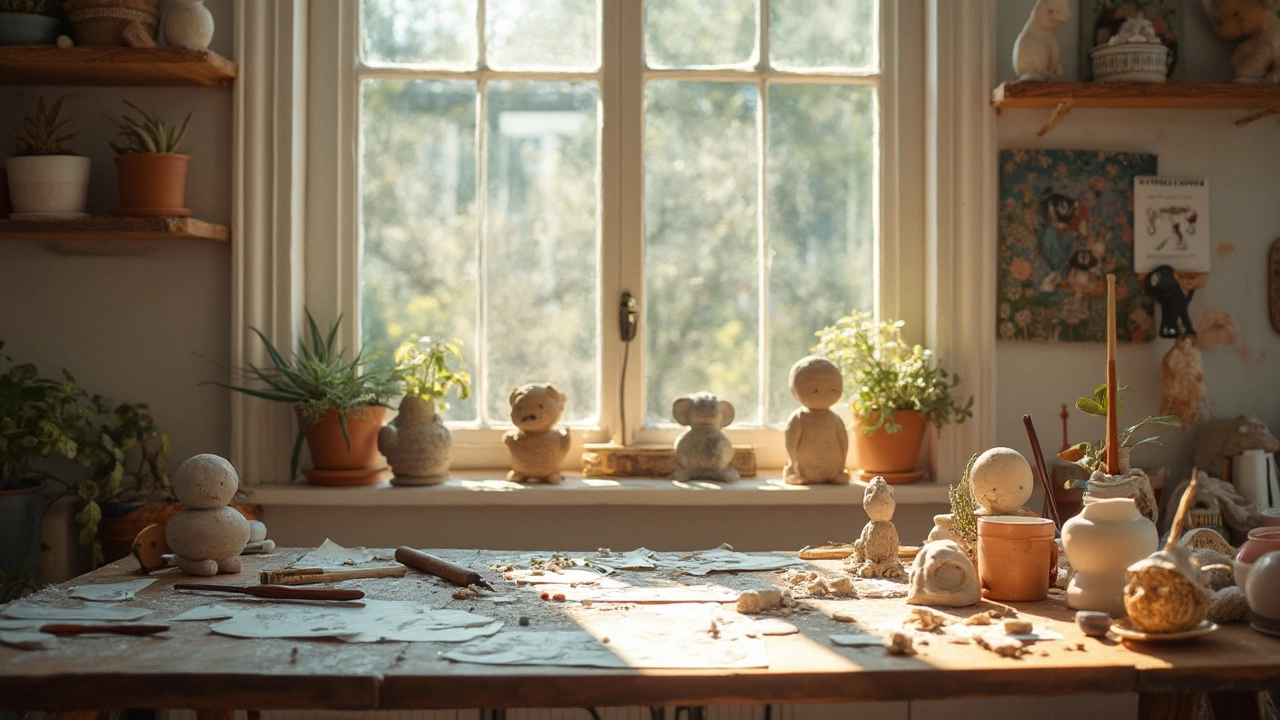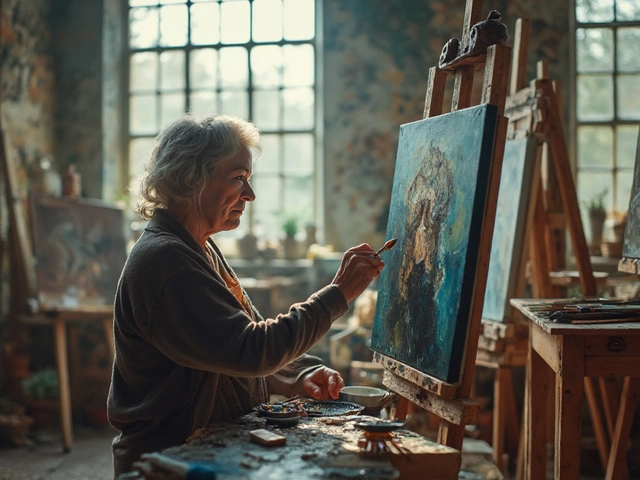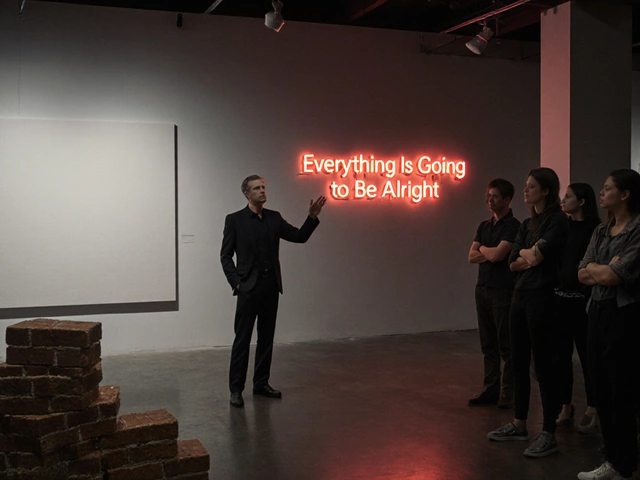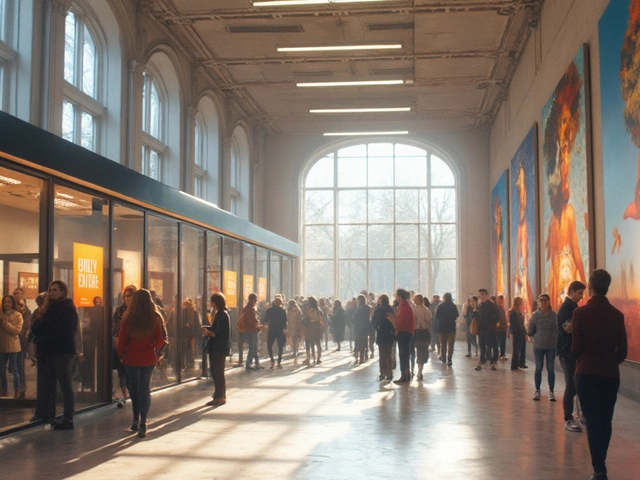Sculpture can seem like something only artists in big, bright studios get to do, but you really don’t need much to start. If you’ve ever mashed clay as a kid or doodled in the margins of your notes, you already get the vibe—taking something basic and giving it shape.
Most beginners get stuck picking their first material. Clay is the go-to because it's cheap, forgiving, and messes are easy to clean up. You could grab a small pack of air-dry clay at any art store and just go for it. Don’t want to spend money? Even a lump of leftover playdough or homemade salt dough does the trick for a first try. No one’s grading you on this.
- What Even Is Sculpture, Really?
- Picking Your First Materials (Cheap and Easy Picks)
- Basic Tools You Actually Need
- Learning Simple Techniques
- Setting Up Your (Not So Fancy) Workspace
- Common First-Timer Mistakes to Dodge
What Even Is Sculpture, Really?
Sculpture is all about making art that takes up actual space. It’s not like drawing or painting where you’re stuck on a flat page. In sculpture, you shape stuff—like clay, wood, or even random junk—into something people can walk around and touch. That’s the big thing: sculpture is three-dimensional, with height, width, and depth.
People have been into sculpture for a long time. We’re talking thousands of years. Some of the oldest are tiny figures carved out of bone or stone—archaeologists pulled a 40,000-year-old lion-man sculpture out of a German cave. Jump to Ancient Greece and you’ve got huge marble statues, perfect and detailed. Today, some sculptors use metal, plastic, or whatever they find in a roadside skip.
| Material | Popular Uses | Who Uses It |
|---|---|---|
| Clay | Molding, modeling | Beginners, pros, schools |
| Stone | Carving | Tradition-heavy pros |
| Metal | Welding, assembling | Modern artists |
| Wood | Carving, whittling | DIYers, folk artists |
| Found Objects | Assemblage, installation | Experimental artists |
Don’t let museum photos fool you—sculpture doesn’t have to be big. It can fit in your hand or fill a city square. Some of the coolest pieces show up in playgrounds or subway tunnels.
The sculpture world covers loads of styles too. There’s realism (where things look life-like), abstract (where you just get the vibe), and everything in between. The best part? There’s no right way to start. The rules are really just guidelines, and experimenting is pretty much expected.
Picking Your First Materials (Cheap and Easy Picks)
If you’re about to try sculpture for the first time, you probably don’t want to blow your paycheck on rare stone or fancy bronze. Smart move. There’s no shame in starting simple—most folks do, even pros.
Your best bet as a newbie is regular, store-bought clay. Air-dry clay is especially popular because you don’t need a kiln. Just shape it and let it sit. Polymer clay is another good choice, especially if you’ve got an oven at home, because it hardens when baked. Both feel nice in the hands and let you fix mistakes before the piece sets.
Here’s a quick breakdown of some common beginner sculpture materials, what they cost, and what they’re good for:
| Material | Best For | Average Cost (US, 2025) | Notes |
|---|---|---|---|
| Air-Dry Clay | Basic hand-building, low mess | $5-10/lb | Dries in 1-3 days; not waterproof |
| Polymer Clay | Detail work, color variety | $12-15/lb | Bake in home oven |
| Salt Dough | Super cheap practice, kids | ~$1 (DIY) | Mix flour, salt, water at home |
| Wire + Foil | Armatures (internal support) | $4-7/roll | Wrap wire with foil for basic shapes |
| Soap | Carving (very beginner friendly) | ~$2/bar | Use a butter knife or craft tool |
Want to try your hand at subtractive sculpture, aka carving? Soap is ridiculously easy. You can use a plain bar from the dollar store and any dull knife you have lying around. It’s honestly more forgiving than wood and you’ll see results fast.
If you’re into recycling, aluminum foil can be squished and modeled for free. You can also upcycle cardboard, styrofoam, or even packaging material to make armatures or the base for your clay pieces.
- For air-dry or polymer clay, grab a plastic tablecloth to protect your table and a cup of water for smoothing edges.
- If you’re not using store-bought stuff, try salt dough — just mix 2 cups flour, 1 cup salt, and 1 cup water. Bake at low heat and you get a solid, paintable object the same day.
- Keep things small at first. Thumb-sized is plenty. It’s less frustrating and way cheaper.
The bottom line: you don’t need special gear or buckets of cash to start on your first piece. Buy cheap, borrow, or raid your own kitchen—just start shaping. The tools and materials come second. The hands-on practice matters way more.
Basic Tools You Actually Need
You don’t have to drop hundreds on fancy gadgets to get serious about sculpture. When you’re just getting started, the essentials should fit in a big pencil case. Forget those giant tool sets for a minute; there are only a few basics that actually make working with clay, plaster, or even wood way easier.
Here’s what you’ll want to have on hand if you’re using clay (the most common starter material):
- Sculpture wire cutter: Handy for slicing blocks of clay cleanly.
- Popsicle sticks or craft sticks: Cheap and good for shaping or smoothing edges.
- Loop tool: This is a wire tool with a loop at the end, perfect for hollowing or shaving off bits.
- Needle tool: A simple pointy stick or actual sculpting needle for etching lines and details.
- Spray bottle with water: Clay dries out fast, so you can spray to keep it workable.
- Sponge: Great for smoothing stuff out and cleaning up your hands or your workspace.
If you lean toward carving wood, you only need a sturdy carving knife and a glove for your non-dominant hand. Get the basics right, and you avoid frustration (and nicked fingers).
It’s wild how much you can do even with kitchen tools. A butter knife, an old credit card, and toothpicks can sub in for pricier gear.
Here’s a quick cheat sheet for what tools match up with what beginner materials:
| Material | Key Tools | Price Range (USD) |
|---|---|---|
| Air-dry Clay | Wire cutter, sponge, popsicle stick | $10–$20 |
| Polymer Clay | Needle tool, rolling pin, toothpicks | $15–$25 |
| Wood | Carving knife, glove, sandpaper | $20–$40 |
Skip the marketing hype and only upgrade your tools when you hit the limits of the cheap stuff. Most beginners outgrow their skills way before they outgrow their starter toolkit.
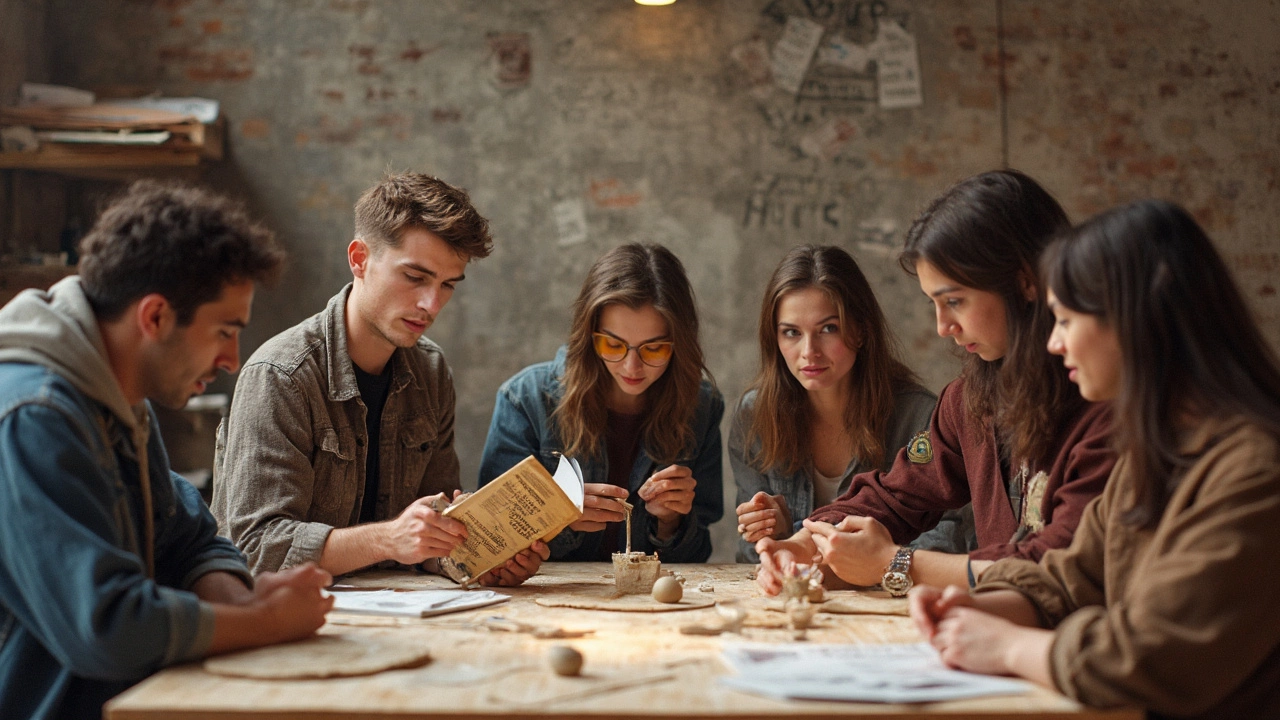
Learning Simple Techniques
Getting the hang of sculpture isn’t about talent—it’s all about playing around and figuring out what works. Start simple. Every pro sculptor started with basic moves like pinching, rolling, and shaping lumps into forms that sorta look like what’s in your head. Don’t let Instagram masterpieces trick you into thinking you need laser-sharp tools or years of school.
Clay is super forgiving. Try making a ball, then a coil, then join them together—boom, you just made a snowman. Sculptors call these simple shapes "forms," and they’re the building blocks of nearly every project, from cartoonish critters to lifelike faces.
One important thing—learn to use your tools (even if it’s just a popsicle stick or broken pencil). Scratch details for texture or use a spoon’s edge to smooth your work. There’s no rulebook here. As the famous sculptor Auguste Rodin once said:
“To any artist, worthy of the name, all in nature is beautiful because his eyes, fearlessly accepting all exterior truth, read there, as in an open book, beauty and character.”
Don’t sweat it if only you see the ‘beauty’ for now—it’s all part of the fun.
Here’s a dead-simple way to practice:
- Start with a ball of clay or dough. Flatten it with your palm.
- Roll it into a snake with both hands.
- Bend it around and shape it into a spiral, ring, or animal tail.
- Pinch the ends and add texture using a fork, toothpick, or even your fingernail.
Want to try something different? Carving is also a classic. Grab a bar of soap and use a butter knife to whittle away corners—it’s cheap, weirdly satisfying, and honestly, everyone should give it a try at least once.
Here’s a quick look at techniques beginners pick up fastest, based on a 2024 survey by the Makerspace Collective:
| Technique | Percent of Beginners Who Master It in 1 Week |
|---|---|
| Rolling coils | 78% |
| Pinching forms | 72% |
| Smoothing surfaces | 61% |
| Adding texture | 54% |
| Joining pieces | 49% |
Focus on getting comfortable, not perfect. Toss a few flops in the bin, laugh at your weird misshapen turtle, and keep trying. The magic’s in the practice.
Setting Up Your (Not So Fancy) Workspace
You don’t need a sleek studio to make art—just some space that isn’t your good couch. Lots of folks start with a corner of their kitchen table or a spare bit of counter. The trick is keeping your spot easy to wipe down since sculpting gets messy fast. Cover the area with a plastic tablecloth or a garbage bag for protection. Even a sturdy piece of cardboard works if you’re in a pinch.
Keep your must-have supplies close by. For most sculpture projects, you’ll want:
- A board or old tray to work on
- A cup or bowl for water (if you’re working with clay)
- Paper towels or old rags
- Your basic sculpting tools (a butter knife, spoon, or toothpick gets the job done for starters)
- Plastic wrap or a bag if you need to pause and come back later (keeps clay soft)
Lighting makes a huge difference. If you can, grab a desk lamp or work near a window. Good light helps you see details and spot little issues before they turn into big mistakes. Bonus: natural daylight gives the truest color for paints and glazes down the road.
If you want less cleanup, think about a cheap plastic tray or baking sheet to hold everything. It’s easy to pick up and stash away when you need your table back for dinner. Hanging a few hooks or sticking a box nearby for tools means less time searching and more time making stuff.
Studies from home hobby groups found people who keep their workspace set up (even just a small tray) are twice as likely to stick with sculpting after their first try. Here’s a quick comparison to show what works best for beginners:
| Workspace Type | Setup Time (minutes) | Cleanup Time (minutes) | Average Cost ($) |
|---|---|---|---|
| Kitchen Table with Cover | 3 | 4 | 5 |
| Dedicated Desk (small) | 5 | 2 | 25 |
| Movable Tray/Board | 2 | 2 | 3 |
Start small. If you carve out just a tiny, repeatable setup, you’re way more likely to actually use it—no guilt, no big effort. That’s how you build creative habits that actually last.
Common First-Timer Mistakes to Dodge
Everyone trips up when starting out in sculpture. The cool thing is, beginners everywhere mess up in pretty much the same ways, so you can dodge a lot of bumps by knowing what to expect.
- Going too big, too soon: It's tempting to plan something huge because your imagination goes wild. But bigger sculptures suck up more materials, break easier, and usually collapse if you haven’t worked out the basics yet. Start with something palm-sized—think coffee mug or tennis ball size.
- Skipping armatures: If your sculpture has any limbs, sticks out, or looks like it might topple, you’ll need an armature (the skeleton underneath). People who skip this end up with slumped, sad projects. Even a piece of wire or foil helps.
- Overworking your material: Clay especially gets cranky if you handle it too much. It dries out or cracks, and you'll spend all your time fixing tiny rips. Take breaks and work in sections.
- Using the wrong tools: You don’t need expensive gear, but using kitchen knives or toothpicks for everything isn’t going to cut it. Basic sculpting tools start around $10. Get a set—it makes a bigger difference than people think.
- Ignoring moisture: Air-dry and water-based clays dry way faster than you expect. Cover projects with plastic wrap between sessions or spray a little water. Rushing leads to cracks and heartbreak later.
- Being afraid to mess up: This sounds cheesy, but worrying about mistakes slows learning more than any bad sculpture ever will. Most early attempts aren’t instant masterpieces, but each one teaches a trick for next time. Keep what looks cool and scrap what doesn’t.
Check out how often these issues trip people up by looking at this table from a 2023 beginners’ sculpture workshop series (150 participants):
| Mistake | Percentage of Beginners |
|---|---|
| Started too big | 62% |
| Forgot armature | 57% |
| Overworked clay | 49% |
| Used wrong tools | 44% |
| Let clay dry out | 53% |
Avoiding these mistakes saves materials, time, and your sanity. Seriously, nobody expects you to nail it first try—just focus on learning with each attempt.
